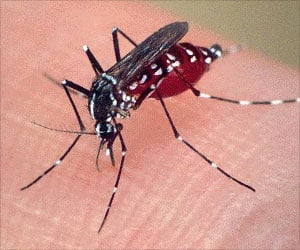
‘Memory B cells in the lung may be important for more effective influenza vaccinations.’
Tweet it Now
Using a mouse model of influenza and experiments that included parabiosis -- the linking of the blood circulatory systems between two mice -- Randall and colleagues definitively showed that lung-resident memory B cells establish themselves in the lung soon after influenza infection. Those lung-resident memory B cells responded more quickly to produce antibodies against influenza after a second infection, as compared to the response by the circulating memory B cells in lymphoid tissue. The UAB researchers also found that establishment of the lung-resident memory B cells required a local antigen encounter in the lung. "These data demonstrate that lung-resident memory B cells are an important component of immunity to respiratory viruses like influenza," Randall said. "They also suggest that vaccines designed to elicit highly effective, long-lived protection against influenza virus infection will need to deliver antigens to the respiratory tract."
B cells, or B lymphocytes, are a class of white blood cells that can develop into antibody-secreting plasma cells or into dormant memory B cells. Specific antibodies produced by the infection-fighting plasma cells help neutralize or destroy viral or bacterial pathogens. Memory B cells "remember" a previous infection and are able to respond more quickly to a second infection by the same pathogen, and thus are part of durable immunity.
The UAB researchers showed that the lung-resident memory B cells do not recirculate throughout the body after establishment in the lungs. They also showed that the lung-resident memory B cells had a different phenotype, as measured by cell surface markers, than the systemic memory B cells found in lymphoid tissue. The lung-resident memory B cells uniformly expressed the chemokine receptor, CXCR3, and they completely lacked the lymph node homing receptor, CD62L.
The crucial experiments to show that the non-circulating, influenza-specific memory B cells permanently resided in the lung involved parabiosis. A mouse of one strain was infected with influenza, then surgically connected with a different strain mouse six weeks later. After two weeks with a shared blood circulation, naïve B cells in the mediastinal lymph nodes and the spleens of both mice had equilibrated evenly among the two mice; but the memory B cells remained in the previously infected lung and did not migrate to the naïve lung.
Advertisement
Source-Eurekalert














